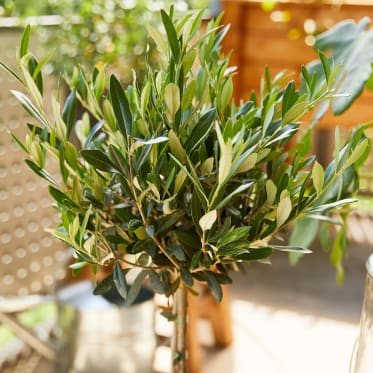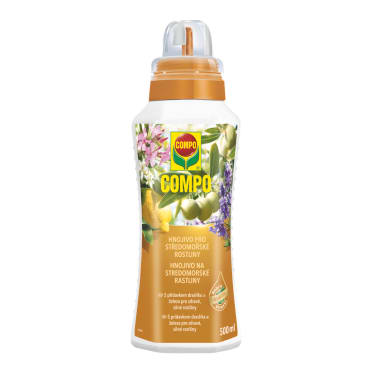Frequent search terms

- COMPO
- Guide
- Plant Care
- Balcony and potted plants
- How do I care for my Mediterranean plants in the spring?
Spring therapy for Mediterranean plants
Have you managed to get plants like the eucalyptus, olive tree or dipladenia through the winter successfully? If so, wonderful, because this means that you've already mastered one of the biggest challenges when it comes to caring for Mediterranean plants. If you want to make sure your sun-loving plants are perfectly prepared for the coming season, then you need to take a few care steps in the spring.
Time to leave the winter home
When can Mediterranean container plants go outside?
Temperatures are steadily getting warmer and you're wondering when it's the right time to move your Mediterranean container plants out of their winter home and back into the open. Basically, a distinction must be made between different species – we recommend that you always keep a watchful eye on the weather forecast, especially in the case of frost-susceptible plants such as the citrus plant, as the risk of night frosts continues until well into May. If it is still cold and wet at this point, or if night temperatures fall below zero, we recommend that you wait a little longer before transplanting them outdoors. But if temperatures are mild, Mediterranean plants can be put outside before mid-May. Less susceptible plants such as the olive tree can even stay outside all the time in milder winters. They should only be moved into their winter home in freezing temperatures. But they can be left outside again as soon as the temperatures start to rise, unlike frost-susceptible plants.
To help you care for your container plants properly in the spring, we've put together five spring care tips for you below!
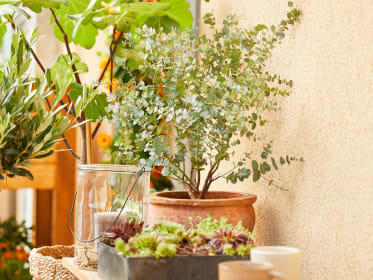
Our first spring care tip
Slowly get them used to the sun
When several weeks or months have passed and it's time for your Mediterranean favourite to move out of its winter home, we recommend that you gradually acclimatise the plant to direct sunlight again first. This is because the leaves of a plant lose their resistance to UV light during the cold and darker months, meaning it's possible they'll get sunburnt if they're moved too quickly. Instead of putting the container plant directly in the blazing midday sun, you should choose a mild, cloudy day and expose the plant to light for only a few hours to begin with. A semi-shaded location next to a sheltered house wall is ideal at first. The plants will usually have acclimatised after a few days and can be moved outside without any problems. Should the temperatures fall below 5 °C at night again, take sensitive plants like lantana, butterfly lavender or dipladenia back indoors. Plants that are winter hardy under certain circumstances like perennial lavender or olive trees can often survive low temperatures if you protect them with jute or something similar. You only need to move them back indoors in severe frosts.

Our second spring care tip
Water your Mediterranean plants
When it starts to get hotter plants that worship the sun usually need more water. Accordingly, your Mediterranean favourites will appreciate more watering in the spring, as the soil in a pot or container can dry out quite quickly, especially on hot days in the blazing sun. It's advisable to do a finger test to determine whether your plant needs to be watered again. If the soil still feels moist a few centimetres below the surface, it's safe to wait a little longer. To prevent fungal infections, it's also important to keep the plant's leaves dry when watering. Depending on the weather, it's advisable to water your Mediterranean plants in the morning, as a large part of the moisture will evaporate during the hot midday hours.
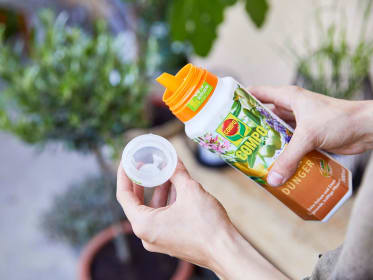
Our third spring care tip
Fertilise your Mediterranean plants
The nutrient requirements of most Mediterranean plants rise in line with outdoor temperatures. Small growth therapies are an ideal way to give your plants a little vitamin boost after the overwintering period but before the main fertilisation is due in April or May. After the dormancy period from September to April, the plant's main growth period begins in May, which is why regular fertilisation is then necessary. A liquid fertilzer such as the COMPO Liquid Fertilizer for Mediterranean Plants gives your plants all the nutrients they need for an intense fruit and flower formation. Alternatively, you can also apply a purely organic liquid fertiliser such as COMPO BIO Liquid Fertilizer for Citrus Plants once a week. If you've transplanted your container plants, wait about four to five weeks before fertilising them again. In the case of new plants, you can mix a solid fertiliser into the soil and put the plants directly in the container or outdoors.
Our fourth spring care tip
Repotting your Mediterranean container plants
To ensure your container plants have the best possible growing conditions, you should plant them in a new pot with fresh substrate regularly. If your Mediterranean container plant has been in the same pot for several years or you notice that the plant is drying out quickly, it may be time for a move. Make sure the new pot or container is big enough. There should be about 2 cm of space around the root ball of smaller container plants and 5 cm around that of larger ones. Now carefully remove the plant with root ball from its old container and loosen the roots a little by hand. Then place the plant in a container that has already been filled with a little soil. We recommend that you use a special soil for Mediterranean plants for this. For example, the COMPO SANA® Potting Soil for Mediterranean Plants contains peat and all important plant nutrients as well as additives for good growth. To prevent excessive moisture, you can also add a layer of drainage and planting granules at the bottom of the container.
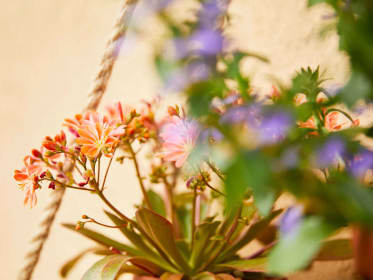
Our fifth spring care tip
Pruning eucalyptus, oleander and friends
When it comes to the annual beauty treatment each spring, there's one thing to remember: Pruning! This is because a lack of sunlight causes some Mediterranean plants, such as eucalyptus, to grow long thin shoots that are usually stunted and susceptible to pest infestation. You can therefore prune them in the spring without any problems – this encourages growth in Mediterranean plants. It's advisable to use a clean pair of pruning shears for cutting back the plants. You should also remove shoots that have become brown or are suffering from a fungal infection as quickly as possible in the spring to prevent a further spread and encourage the plant to grow healthy new shoots.
This might also interest you
More products for your Mediterranean plants




